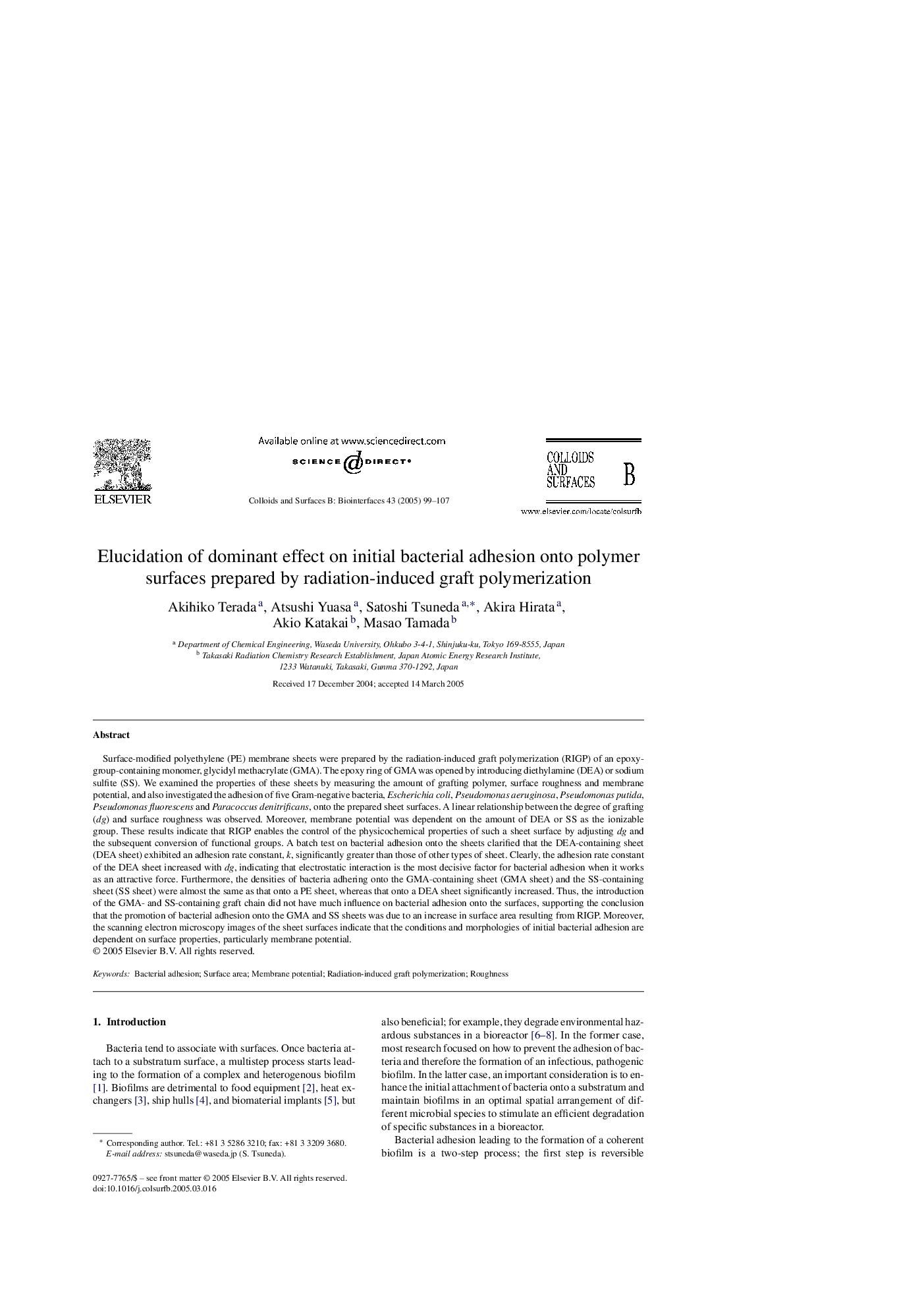| Article ID | Journal | Published Year | Pages | File Type |
|---|---|---|---|---|
| 10374993 | Colloids and Surfaces B: Biointerfaces | 2005 | 9 Pages |
Abstract
Surface-modified polyethylene (PE) membrane sheets were prepared by the radiation-induced graft polymerization (RIGP) of an epoxy-group-containing monomer, glycidyl methacrylate (GMA). The epoxy ring of GMA was opened by introducing diethylamine (DEA) or sodium sulfite (SS). We examined the properties of these sheets by measuring the amount of grafting polymer, surface roughness and membrane potential, and also investigated the adhesion of five Gram-negative bacteria, Escherichia coli, Pseudomonas aeruginosa, Pseudomonas putida, Pseudomonas fluorescens and Paracoccus denitrificans, onto the prepared sheet surfaces. A linear relationship between the degree of grafting (dg) and surface roughness was observed. Moreover, membrane potential was dependent on the amount of DEA or SS as the ionizable group. These results indicate that RIGP enables the control of the physicochemical properties of such a sheet surface by adjusting dg and the subsequent conversion of functional groups. A batch test on bacterial adhesion onto the sheets clarified that the DEA-containing sheet (DEA sheet) exhibited an adhesion rate constant, k, significantly greater than those of other types of sheet. Clearly, the adhesion rate constant of the DEA sheet increased with dg, indicating that electrostatic interaction is the most decisive factor for bacterial adhesion when it works as an attractive force. Furthermore, the densities of bacteria adhering onto the GMA-containing sheet (GMA sheet) and the SS-containing sheet (SS sheet) were almost the same as that onto a PE sheet, whereas that onto a DEA sheet significantly increased. Thus, the introduction of the GMA- and SS-containing graft chain did not have much influence on bacterial adhesion onto the surfaces, supporting the conclusion that the promotion of bacterial adhesion onto the GMA and SS sheets was due to an increase in surface area resulting from RIGP. Moreover, the scanning electron microscopy images of the sheet surfaces indicate that the conditions and morphologies of initial bacterial adhesion are dependent on surface properties, particularly membrane potential.
Keywords
Related Topics
Physical Sciences and Engineering
Chemical Engineering
Colloid and Surface Chemistry
Authors
Akihiko Terada, Atsushi Yuasa, Satoshi Tsuneda, Akira Hirata, Akio Katakai, Masao Tamada,
